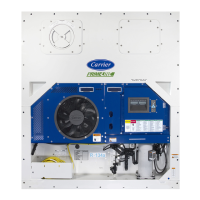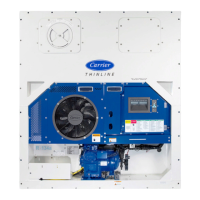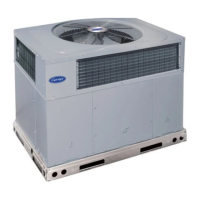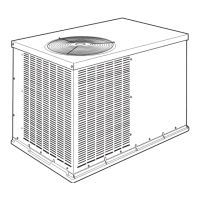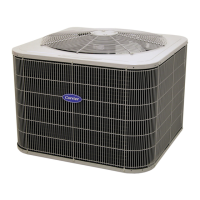7–1 T-362
SECTION 7
SERVICE
NOTE
Use a refrigerant recovery system whenever removing refrigerant. When working with refrigerants you
must comply with all local government environmental laws. In the U.S.A., refer to EPA section 608.
EXPLOSION HAZARD Failure to follow this WARNING can result in death, serious personal
injury and / or property damage. Never use air or gas mixtures containing oxygen (O
2
) for leak
testing or operating the product. Charge only with refrigerants R-134a or R-513A as specified
for the unit model number: Refrigerant must conform to AHRI Standard 700 specification.
NOTE
Annual maintenance procedures for PrimeLINE units 69NT40-561 can be found in the 62-10327 Annual
Maintenance Manual, located in the Literature section of the Container Refrigeration website. To find the
manual from the Literature section, click on Container Units > All Container Units > Operation.
7.1 Section Layout
Service procedures are provided in this section beginning with refrigeration system service, then refrigeration
system component service, electrical system service, temperature recorder service and general service. See the
Table of Contents to locate specific topics.
7.2 Manifold Gauge Set
The manifold gauge set (see Figure 7.1) is used to determine system operating pressure, add refrigerant charge,
and to equalize or evacuate the system.
Figure 7.1 Manifold Gauge Set
1) Suction Pressure Valve (shown
backseated)
2) Suction Pressure Gauge
3) Discharge Pressure Gauge
4) Discharge Pressure Valve
(shown frontseated)
5) High Side Connection
6) Utility Connection to:
a. Refrigerant Cylinder
b. Vacuum Pump
c. Oil Container
7) Low Side Connection
- - - - -
When the Suction Pressure Valve is frontseated (turned all the way in), the suction (low) pressure can be checked
at the Suction Pressure Gauge.
When the Discharge Pressure Valve is frontseated, the discharge (high) pressure can be checked at the Discharge
Pressure Gauge.
When both valves are backseated (all the way out), high pressure vapor will flow into the low side.
1
2
3
4
5
6
7
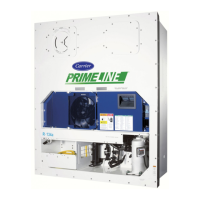
